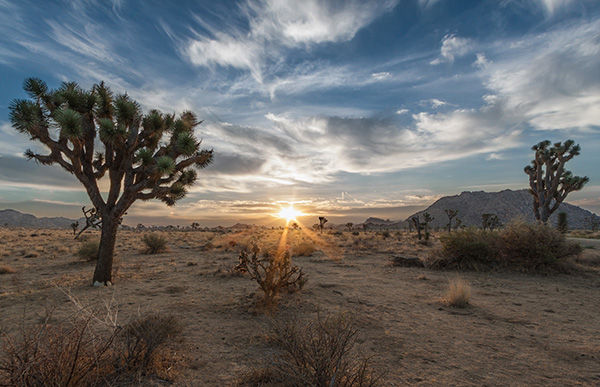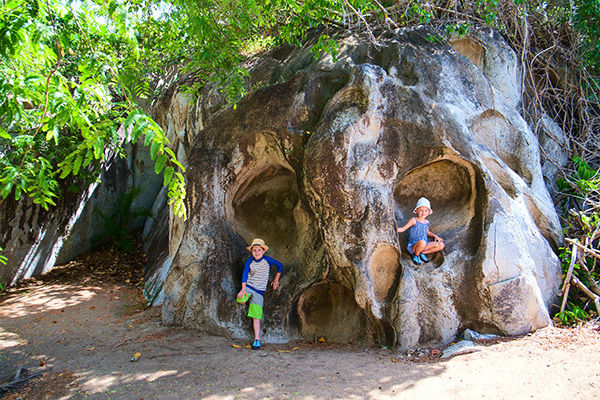Hiking in Southern California
- Jack Dippel
- Jul 9, 2020
- 5 min read

Looking to go hiking in Southern California? With mountains, canyons, desert, and ocean, there are plenty of spots to choose from. Here are a few tips on where to go and what to take with you.
Joshua Tree National Park
Located just north of Palm Springs, Joshua Tree National Park has been a major attraction for locals and tourists alike for decades. First declared a historical monument in 1936, it was named for the Joshua trees (yucca brevifolia) that cover the land.
The park is over 790,000 acres—slightly larger than the state of Rhode Island.
Joshua Tree National Park is unique because it attracts such a large number of tourists to such a rural area. There are many trails within the park that can be accessed from the campgrounds. Reservations are recommended during the peak fall and spring seasons.
Did you know? The geology of Joshua Tree National Park is the result of millions of years of geologic processes. Watch this short 2-minute animation below to learn how the park's iconic monzogranite boulders were formed over the course of time.
Ever wonder how the Joshua tree got its name? According to legend, Mormon pioneers considered the limbs of the Joshua trees to resemble the upstretched arms of Joshua leading them to the promised land. Learn more about Joshua trees at nps.gov.
In their "Nature Minute" videos, published by the National Park Service, you can enjoy the peace and quiet scenes found all over Joshua Tree National Park. Take a moment to discover the subtle events that take place each and every day.
To help you choose where to go hiking, some of the more popular and shorter trails in the park include: Indian Cove, Cholla Cactus Garden, Skull Rock and Hidden Valley.
Hidden Valley
Hidden Valley is the shortest trail in the park. It is a one-mile hike that offers a chance to view the beauty of the park without straying too far into the desert.
Hidden Valley is a unique micro-habitat that brings together a wide range of plants and animals not typically found together. Healthy populations of Joshua, juniper, pinyon and oak trees are mixed with mesquite, yucca, nolina and various cacti.
There is also a nearby campground available for tenting and small RVs (twenty five feet or less).
Skull Rock
This trail is all about the scenery. Probably the most popular hiking trail in the park, Skull Rock is a boulder-filled desert environment with an abundance of flowers and cacti lining a mile and a half loop.
The skull-rock formations also provide fun photo opportunities.

If you have more time, check out the eye-catching boulder formations that can be found by navigating the Split Rock Loop Trail from Skull Rock.
Longer Trails
Some of the longer trails include the Boy Scout Hiking Trail, Lost Horse Mine Loop and the Lost Palms Oasis Trail take hikers to old mine shafts.
For these longer trails, packing heavier is advised. These trails are pretty rural, and you don’t want to dehydrate. Packing an extra bottle of water is advisable—just make sure your backpack isn’t weighed down too much. Fifteen pounds should be the maximum weight.
To get more info, and to help you plan a visit, the National Park Service gives you some great guidance. Visit their "Plan Your Visit" webpage.
More Southern California Trails
Beyond Joshua Tree National Park, Southern California abounds with hiking trails. There are too many to list here, but we can suggest three very different trails.
The "Top of the World" Hike
If you want to enjoy a stunning, panoramic view, the Top of the World is located in the city of Laguna Beach, just northwest of San Juan Capistrano. Officially named Alta Laguna Park, the highest point is 1,036 feet above sea level.
The view is spectacular; you can see the Pacific Ocean—and all to way to Orange County on a clear day. Alta Laguna provides both hiking and biking trails into the Aliso and Wood Canyons Wilderness Park.
Want to experience it virtually from your own living room? Check out this video below!
Griffith Park
If you’re looking for something unique and closer to Los Angeles, it doesn't get any better than Griffith Park. Located at the eastern end of the Santa Monica Mountains, the park covers over 4,300 acres. You can actually see a map here.
The trails are very smooth and flat, but they can be very long. There are plenty of historic attractions on the trails: Griffith Observatory, the Greek Theatre, and Travel Town Railroad, to name a few.
Turnbull Canyon Trail
Turnbull Canyon Trail is a quaint four-mile looping trail located near the city of Whittier that is part of the Puente Hills Preserve. This trail is definitely a little more rugged and scenic. The canyon has a creek supporting a woodland area dominated by sycamore trees. The canyon slopes are covered in coastal sage. This trail attracts many bicyclists, making it difficult to share the road at times.
Don't Forget to Bring Water
Every hiker needs to be prepared, and proper hydration is the most important consideration. Some trails, like the ones found in Griffith Park, have water fountains nearby. However, due to the state of the world and COVID-19, it would not be wise to use them for the time being.
Maintaining a brisk pace is important—but so is hydration. You don’t want to be overburdened with gear, so when it comes to easy ways to bring water, check out our paracord carrier nets for the larger Hydro Flask and YETI water bottles.
Backpacks
There are plenty of small backpacks that are ideal for hiking. Take a light backpack with you, something like this Osprey Daypack, but you'll find tons of options by searching Amazon or going to your local sporting goods outlet. By light, we mean taking water, snacks and extra articles of clothing, and minimal safety or medical supplies.
If you'd rather leave the backpack at home and are only looking to carry a few personal items, go ultralight. Gearproz has you covered. Our neoprene "FlatPac" is lightweight and water resistant, perfect for just the essentials: ID, phone, money and small snacks.
A Few Dos and Don’ts on the Trail
Do make sure friends or relatives know where you are going.
Do take your cell phone (you would be surprised at how many people forget to).
Do take a small flashlight.
Do pack a sweater; the desert can get cold at night.
Do take a first aid kit. Nothing fancy, just the basics. And a pocket knife and waterproof matches wouldn’t hurt - especially on the longer trails.
Don’t underestimate the length of any trail. It sounds old-fashioned, but it is a good idea to map out your hike beforehand. It is important to find out if you can veer off the trail and onto a main road. Some trails even have public transportation nearby; knowing where may prove useful, especially if you have to get home fast.
Don’t hold bottled water in your hand while jogging. Running with something in your hand can alter your stride. Proper running form starts with muscle equilibrium and an even distribution of weight across your entire body.
Don’t forget the time, most trails don’t have street lights.
Happy Trails!
David St. Clair



Commenti